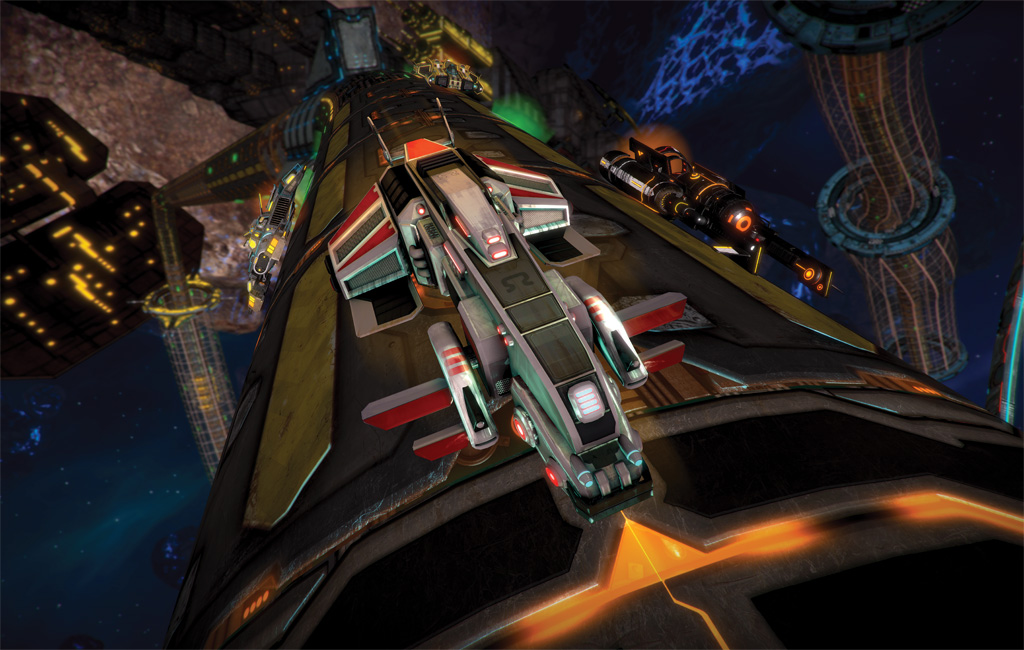Glenn, connecting fans to a racing game to simulate headwind – how does anyone come up with such an idea?

Glenn Jarrett, Director of Austella, whose sister company Tammeka developed the VR game.
The idea came with the release of the “Radial-G: Racing Revolved” racing game published for the PlayStation 4 by our sister company Tammeka Games in 2016. We came up with a clever promotion for the release: We rented the wind tunnel at Kingston University and used it to simulate the game’s speed feeling. It literally blew the attending journalists away. The positive media coverage got us thinking about whether it might be possible to deliver a similar impact with a portable unit.
How did ebm-papst get into the game?
I knew our development partners, the electrical components dealer RS Components and the guys from ebm-papst, pretty well from previous jobs. So, getting the two companies on board seemed the obvious thing to do. That soon proved to be the right decision, because both sides worked on it enthusiastically and had a lot of fun. It was just great.
How exactly did that work? Isn’t it a case of two worlds colliding?
Well, one reason for Austella’s existence as a pure VR specialist next to Tammeka Games, which actually developed the game, was that cooperation between the gaming industry and other industries wasn’t working very well. With Austella we broke with the usual clichés and now we also work for the medical and education sectors. So we know how things work outside the world of consoles and such. And in places where we might have differed from ebm-papst, we didn’t see that as a problem but as a chance to learn from each other.
“We have to try out new things constantly.” Glenn Jarrett, Director Austella
How can a big company like ebm-papst learn something from you?
I’d say that cooperation with a small company like us can actually be a source of inspiration. Big companies are big because they do something especially well. But that’s not enough to last. At some point, even a large corporation has to learn new things if it wants to stay where it is. On the other hand, we’re focused one hundred percent on innovation because the potential of VR is nowhere near to being exhausted. We have to try out new things constantly. And if ebm-papst or other companies get infected by that, then really exciting things can happen here.

The VR fan even comes in a stylish, professional package.
But were there also things that you picked up from ebm-papst?
We were definitely impressed by the holistic and structured approach our partners took toward development. They really thought of everything, especially in terms of safety. After all, the fan box comes into direct contact with the players, and we don’t want kids getting their fingers between the fan blades.
What was the biggest development challenge?
The game needed to communicate with the fan somehow, the racing speed had to be converted into a control signal for the fan. In the end, we jointly designed an interface for connecting the game directly to a conventional ebm-papst controller. It translates the digital data from Radial-G into an analog signal that tells the fan how fast it has to turn.
But seriously, the whole application is just a game, isn’t it?
Not at all. You have to look at it this way: VR is stuck in a catch-22 situation. There still aren’t many glasses being sold, so the big producers aren’t making games on the scale of Call of Duty or Grand Theft Auto for the hardware. But that in turn keeps more gamers from buying glasses. There’s only one way out of this vicious circle, and that’s to let the players try out the awesome VR feeling themselves – for example at trade fairs or roadshows. And every bit of attention that we can get with applications like our fan box helps.
Are other partnerships like this possible? Do you have other plans that involve moving air?
Oh, there are all sorts of possibilities. For example, there’s a lot of experimentation going on with sensory pods, a kind of whole-body capsule that the player puts on to feel controlled air flow that simulates the game character’s experience in the virtual environment. And heat or cold could also be used to increase the immersiveness. Like I said, so far there are no limits to innovation in VR.

Leave a comment